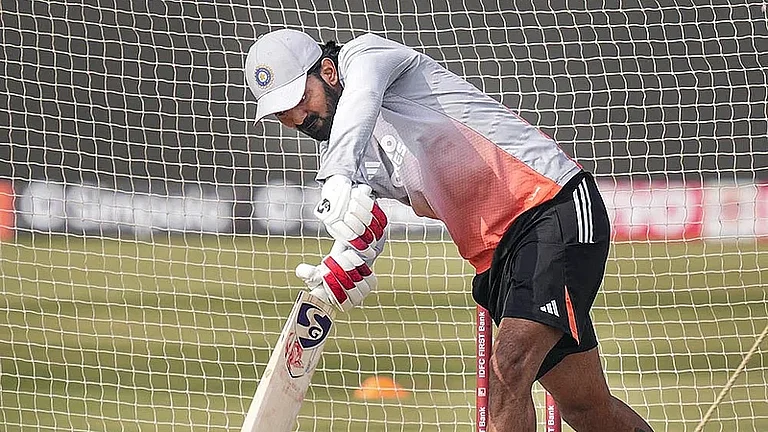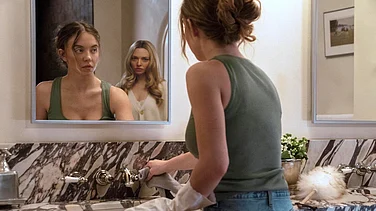Puran Thapa, 25, has felt a unique connection with the hills of Himachal Pradesh ever since his father was posted at Subathu cantonment in Solan district, where Thapa went to an Army School in Dagshai. His father, a retired subedar major in the Gorkha rifles has travelled borders from West Bengal to Pathankot in Punjab.
Born in Nepal, Thapa, a post-graduate in fine arts from Himachal Pradesh University, is on a mission to bring back the glory to dying traditional Pahari architecture –Kath-kuni.
Last week, when he re-created the magic of a fascinating Kath-kuni building on canvas at ‘Shimla Art Festival’, a three-day mega event, his work caught the attention of countless visitors, including tourists and creative veterans.
“This is an abandoned house at village Dhashal, near Manali in Kullu. I visited this isolated Pahari village some time back. I got really moved by the craftsmanship of its architecture which unfortunately is vanishing," Puran Thapa told Outlook.
Derived from two words -- ‘Kath’, which means wood, and ‘Kuni' meaning corner -- is a natural style of making buildings using locally available wood and stones as basic constructional materials.

The buildings, so built, are eco-friendly, earthquake resistant and suit the climatic conditions of the hilly region.
"The building technique involves using alternating layers of long thick wooden logs and stone masonry. There is no mortar or other materials, except an occasional mug. There are no vertical columns, instead of horizontal beams are built. The stones are tightly fitted to provide a strong base to the structure," said Harbans Brascon, Director, Public Relations, who hails from Kinnaur. The technique of construction is often called ‘Cator and cribbage’
The Kath-Kuni buildings are popular in Kullu-Manali, Chamba, Shimla and Kinnaur apart from Uttarakhand and Nepal.
Puran Thapa said that he has studied almost 100 to 150 Kath-kuni buildings and re-created their architectural magic on the canvas.
Most of these buildings are either lying abandoned owing to families and children moving to urban towns, or they remain ill-maintained because artisans are not readily available for preserving the age-old architecture. Shortage of timber and stones is another contributing factor.
“Nevertheless, some families have managed to conserve their Kath-kuni buildings. They have evolved these into homestays, utilising their commercial value,” said Puran Thapa.
The budding creative artist is also working with descendants of the legendary Stokes family for his research and how Samuel Stokes, the man who Introduced Apple Cultivation in Himachal Pradesh, came to the hills in 1904 and made Thanedar his home.
Commenting on Thapa, Him Chatterjee, a noted creative artist and chairman of the Department of Visual Arts at Himachal Pradesh University, said, “Puran Thapa is an outstanding artist, whose work in Kath-Kuni, is of great significance. His work does not stand alone in Himachal Pradesh but also in the Himalayan region, including Nepal and Jammu and Kashmir. His art has definitely moved beyond the canvas to make people realise the value of preserving Kath-Kuni.”
Puran Thapa reiterated that he is planning to take up Kath-kuni as part of his PhD thesis and help in the preservation, revival and propagation of this traditional building art.
One of the most popular Kath-kuni building is Bhimakali temple at Sarahan, near Rampur. Bhimakali is the family deity of former Chief Minister Virbhadra Singh. Only some years back, he got the conservation work done to give a fine finish to the temple. The building was also a theme chosen by one of the participants in the art festival.
Another veteran artist from Jammu, KK Gandhi, also brought with him a live visual impact on a large canvas at the sprawling Ridge, to showcase his brilliant artistry. His paintings are related to the Himalayan landscape with Buddhist stupas and snowlines in high mountains.
Sharing his experience, Gandhi said, “Where else can I get such a fantastic crowd attracted to my work? An open blue sky, a cool breeze and the fragrance of cedars. That’s what art needs, after all !”


























